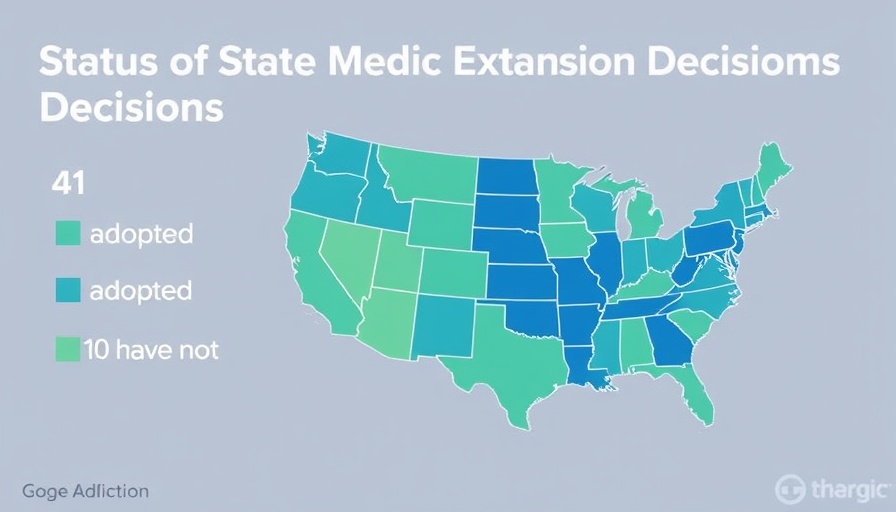
Understanding Medicaid Expansion: A Lifeline for Many
The ongoing discourse surrounding Medicaid expansion is more than a policy issue; it's a story about people. Millions of Americans, both insured and uninsured, are directly affected by these decisions made across the states. Without comprehensive healthcare, countless individuals face difficult choices navigating financial burdens and health vulnerabilities.
Historical Context: The Birth of Medicaid
Medicaid was launched in 1965 as part of the Social Security Act to provide health coverage for low-income individuals. It has since evolved, with significant changes and expansions being made over the years. Notably, the Affordable Care Act (ACA) of 2010 offered states the option to expand Medicaid coverage, aiming to increase the accessibility of health services. However, not all states have taken this leap, which leads to disparities in healthcare access.
The Numbers Tell a Story of Inequity
Today, as of 2025, thirty-eight states and the District of Columbia have opted to expand Medicaid, but twelve states remain resistant. This division has created a patchwork of healthcare across the U.S. For instance, states like Texas and Florida continue to deny expansion, leaving millions without the necessary coverage, thereby exacerbating health inequalities. Meanwhile, states that have expanded Medicaid have seen significant drops in the uninsured rate and improvements in overall health outcomes.
The Human Impact: Real Stories of Need
Imagine a young mother in Alabama who struggles to obtain adequate healthcare for her children due to her state’s refusal to expand Medicaid. Stories like hers illuminate why expansion debates matter. These narratives reveal the human cost of policy decisions that can seem abstract at the legislative level. They bring home the reality that, for many, the fault lines of healthcare coverage run deep.
Future Predictions and Trends in Healthcare
As the landscape of healthcare continues to change, predictions suggest that the pressure on states to expand Medicaid is likely to intensify. With upcoming elections and increasing awareness among the public about healthcare inequities, advocates are hopeful that more states will choose to participate. Furthermore, we see a growing trend of grassroots movements energizing communities to advocate for their right to healthcare.
Celebrating Local Heroes Who Make a Difference
In many states, grassroots organizations have been pivotal in pushing for Medicaid expansion. Local advocates have tirelessly campaigned, organized awareness events, and provided education on health issues. Their passion and dedication shine as beacons of hope, proving that change often begins at the community level. Celebrating these heroes is essential in fostering a culture of support and condition for positive change in access to healthcare.
What You Can Do: Advocate for Change
As individuals, we have the power to influence healthcare policy. Engaging with local advocacy groups, attending town hall meetings, or simply spreading awareness on social media are ways to make a difference. Understanding the issues at play is crucial, but translating knowledge into action can lead to meaningful change. Together, we can urge our state leaders to take that vital step toward expanding Medicaid and providing essential healthcare coverage to those in need.
As the conversation continues, let us commit to standing up for our communities, ensuring every individual has access to the healthcare they deserve.
 Add Row
Add Row  Add
Add 




Write A Comment